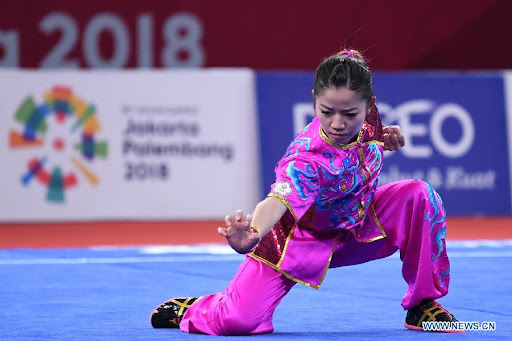
What is Nan Quan?
Contemporary Nan Quan is a modern combination of several southern styles. Contemporary Nan Quan features vigorous, athletic movements with very stable, low stances, extensive hand techniques and a vocal articulation called fasheng (“Release Shout”) which is the predecessor of the Japanese and Korean martial arts Kiai. Power is driven from sharp waist movements with special emphasis on fast stance transition to generate power and speed in the arms. Styles in Nan Quan: Hung Gar, Southern Animal Styles such as Fujian White Crane and Tiger, Lau Gar, Choy Gar, Li Gar, Fut Gar, Choy Li Fut, Mok Gar and Wing Chun.
How was contemporary wushu developed?
Traditional martial arts styles were almost completely wiped out due to efforts made under Mao Zedong and Communist rule to destroy almost everything traditional in China. Literature at the Shaolin Temple was destroyed at this time, and kung fu masters fled the country, all of which left the native arts somewhat fractured.
Given this and more, in the mid-1900s the Chinese government attempted to nationalize and standardize the practice of martial arts in China. In essence, this turned aspects of it into a sport. In 1958, the All-China Wushu Association came to be via an appointment from the government. Along with this, the sport became known as wushu.
Along the way, the Chinese State Commission for Physical Culture and Sports compelled and moved forward the creation of standardized forms for most of the major Chinese arts, which led to a national wushu system with standards for forms, teaching, and instructor grading. Around the same time, wushu teachings were blended into curriculums at the high school and university level.
In 1986, the Chinese National Research Institute of Wushu was established as the central authority for the research and administration of Wushu activities in the People's Republic of China.
Nan Quan in Pop Culture:
Nan Quan = Earth Bending in Avatar the Last Airbender
The Hung Gar style of kung fu is the main influence for earth bending; they both feature "heavily rooted stances and strong kicks and punches that evoke the mass and power of earth." Hung Gar itself parallels animal movements such as the tiger's hard blows and the crane's affinity to landing gracefully on the earth. There are exceptions to this rule — Toph, the blind earth bender's style, is based on Southern Praying Mantis, a precise stepping skill which Toph uses to maintain constant contact with the ground and "see".
Earth bending, however, draws from a great number of the styles related to Nan Quan (southern fist), which is a collection of Chinese martial arts styles from Southern China. This includes Choy Li Fut, Choy Gar, Hung Ga, Lau Gar, Li Gar, Mok Gar, and Wing Chun.



